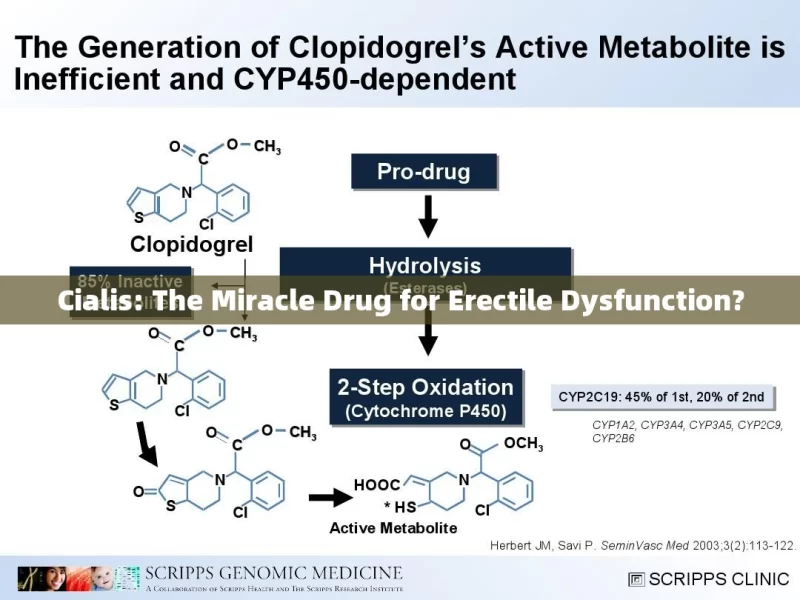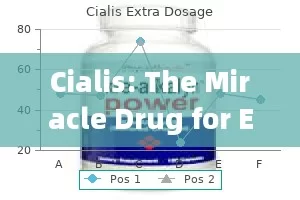Cialis: The Miracle Drug for Erectile Dysfunction?
Cialis, a medication widely known for its effectiveness in treating erectile dysfunction, has gained significant popularity in recent years. But what exactly is Cialis, and how does it work?
Cialis belongs to a class of drugs called phosphodiesterase type 5 (PDE5) inhibitors. It works by increasing blood flow to the penis, which helps men achieve and maintain an erection. Unlike other similar medications, Cialis has a longer duration of action, allowing for more spontaneity in sexual activity.
One of the key benefits of Cialis is its flexibility. It can be taken as needed, approximately 30 minutes before sexual activity, or on a daily basis for those who prefer a more consistent approach. This makes it a convenient option for many men.
However, like any medication, Cialis may have potential side effects. These can include headache, back pain, muscle aches, flushing, and indigestion. It's important to discuss these potential side effects with a healthcare provider before starting treatment.

In addition, Cialis may interact with other medications, so it's crucial to inform your doctor of all the medications you are currently taking. This includes over-the-counter drugs, herbal supplements, and vitamins.
Another consideration is the cost of Cialis. It can be relatively expensive, especially without insurance coverage. However, there are often generic versions available that may be more affordable.
Overall, Cialis can be a highly effective treatment option for men with erectile dysfunction. It offers the potential for improved sexual performance and increased confidence. However, it's important to approach its use with caution and under the guidance of a healthcare provider.

My Opinion: I believe that Cialis can be a valuable tool for men struggling with erectile dysfunction. It provides a viable solution that can enhance their quality of life and relationships. However, it's essential to use it responsibly and in consultation with a medical professional to ensure its safety and effectiveness. Additionally, efforts should be made to increase awareness and access to affordable treatment options to benefit a wider population.